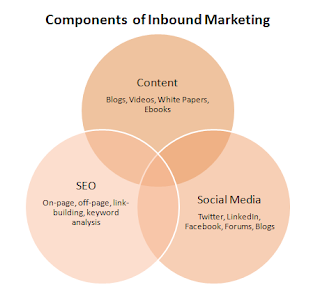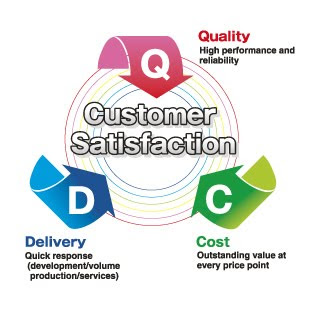During a recession, consumers’ discretionary spending is typically reduced, and simply providing quality products or services at a reasonable price may not be enough to draw customers in.
Consumers during a recession are not only looking for discounts; they’re looking for real value for their dollar. To simply discount every item you sell may not be financially prudent. Instead, what some savvy business owners have done is create a distinctive discount offering – a hook – that grabs consumer’s attention in its enticing appeal and value. Other product pricing often remains status quo, as the hook for the special offering pulls customers in. If done properly, it’s a win-win for both businesses and consumers.
Casual dining chain Applebee's has promoted their Pick ‘N Pair Lunch Combos (two selections from an array of soups, salads, sandwiches and pasta dishes) starting at $5.99, and their “2 for $20” dinners (a generous-sized appetizer and two classic entrees for a total of $20).
The big blooms of the online flower delivery companies – like FTD, 1-800-Flowers and ProFlowers – have been fighting the recession with special low-price promotions for big flower occasions like Mother’s Day. ProFlowers put out radio spots for their Peruvian Lilies bouquet – 100 blooms with a vase for $19.99/down from the regular price of $39.98. Listeners click on a microphone icon on their website and enter the DJ’s name to get the advertised special.
The large chains are not the only businesses that have successfully drawn in budget-conscious consumers in these economically challenging times. Here is a sampling of small business owners throughout the country that have shared their recession-busting tactics with Business Know-How:
Lynne Waymon, CEO of Contacts Count
Co-author of Make Your Contacts Count
Silver Spring, MD
Contacts Count is a nationwide consulting and training firm specializing in professional and business networking. When Co-founder and CEO Lynne Waymon experienced some repercussions of this latest recession – cancellations of an all-day keynote and a training session postponed to next fall – it became evident that some of her clients no longer had the funds for an all day keynote presentation or workshop. Waymon responded by creating new offerings in a repackaged format that are both cost-effective and educationally valuable for those companies with more limited funds.
Some of Contacts Count’s more budget conscious offerings now include:
Webinars: Less expensive - $79 per webinar; easy – attend from home or office
Book Clubs: Participants read Make Your Contacts Count in four segments; four 1-hour teleseminar sessions; $80 for all four sessions
Job Hunt: 50 Tips eBook: a mere $3.99 for this downloadable eBook that provides 50 tips for “job hunters in today’s crisis economy.” Waymon says this minimally priced product actually “advertises all of our other products;” in every tip, there’s a mention of her book or CD.
Waymon says the key to pulling in customers during a recession is the ability to be creative and repackage yourself – create a new product. “I’m keeping the relationships going – staying in touch,” says Waymon. Then, when company budgets get restored, you’re on the forefront of clients’ minds: “You don’t want to fall to the bottom of the pile. You need to stay on top on the pile.”
Lou Lynne Moss, owner of The Flower Shoppe
Pratt, Kansas
Lou Lynne Moss has witnessed first-hand the demise of florist shops in her neighboring rural towns in recent months. In business herself for 32 years, Moss though has managed to stay alive and successfully maintain her customer base through what has been challenging times for her industry. She’s accomplished this in part she says with a combination of “hard work, long hours, networking, a focus on quality and exceptional service.”
Maintaining relationships with her customers – that sometimes span three generations – is also one of Moss’s top priorities. It’s not unusual for this charming Flower Shoppe owner to simply pay a visit to a customer and have a nice chat at their kitchen table.
Moss has also devoted herself to research into finding unique floral offerings that will set her shop apart from the competition, and to meeting the special needs of her customers. Local teens recently asked for their prom corsages to be made with an Orchard in a particularly deep shade of purple. “I’ll find a way,” says Moss, “to get them exactly what they want.”
Jerry Jahn, owner of Spokane Movers
Spokane, Washington
In sharing his thoughts of how the recession has affected businesses in his neck of the woods, Spokane Movers owner Jerry Jahn shared a quip he heard on the golf course recently: “Flat is the new growth.” When the recession hit, Jahn himself experienced a halt in growth and even a downturn in business. A long-time business owner, Jahn rebounded by “going back to the same principles I used when I started out – carefully strategized advertising and focusing on customers’ needs.”
One way Jahn has accomplished this is by offering his customers a “6-Year Price Rollback.” On Spokanemovers.com’ homepage, a colorful scrolling screen message invitingly attracts the eye: “We have a Spring Special for you! CLICK HERE!” Upon clicking, website visitors find a coupon for special springtime weekday rates that were in effect in the year 2003. Jahn had considered calling the special something like, “the Economic Stimulator,” but opted instead for “Spring Special.”
Vincent Milano, owner of Setauket Pasteria
East Setauket, Long Island, New York
Nestled in a strip of stores in East Setauket, Long Island, lies Setauket Pasteria – a picturesque Italian restaurant owned by Vincent Milano. When Milano noticed less patrons coming into his restaurant, he took action that now has hungry customers filling his seats and keeping his wait staff busy and gainfully employed. Milano launched a “blitz” of lunch and dinner specials that has proven hard for local families, businesses or their wallets to resist.
Mondays through Fridays, a $5.00 lunch can be had – taxes included – and features five specials numbered one to five. Choices vary daily and may include selections such as Eggplant Rollatini, Chicken Parmigiana, Fettucini Alfredo, or a Personal Pizza. Milano feels part of the lunch special’s success, other than the price, is its simplicity. He’s enjoying a significant volume of repeat customers – many of them local businesses that are looking to cut back, but are still able to swing the $5.00-a-lunch tab.
Dinner specials also abound: Buy-1-Dinner-Get-1-Free Sundays and Wednesdays; Unlimited House Wine with Dinners on Tuesdays; $12.95 Pasta Night including Salad,
Pasta Entrée, and Dessert on Mondays; Free Soup, Salad and Dessert with any Entrée on Thursdays; and Live Music on Fridays.
The idea of either empty tables or unemployed staff is not something Milano is comfortable with. Through his specials, he “keeps things moving” the way he likes, and says he is “absolutely better off with the promotions.” Diners who order a glass of wine or dessert with their B1G1Free meals help – and the high volume repeat business helps too. … And after one taste of Setauket Pasteria’s homemade fettucini, it would be difficult not to come back for more. This writer can testify to that.
Reference:http://www.businessknowhow.com/marketing/recessioncustomers.htm
My OPINION:During a recession, consumers’ flexible spending is usually reduced, and simply providing quality products or services at a reasonable price may not be enough to draw customers in.
Here are some of tactics given to overcome when recessions is prevailing in the economy.
Consumers during a recession are not only looking for discounts; they’re looking for real value of their money. Qualified business owners advice to create a unique discount offering – a hook – that captures consumer’s attention in its attractive appeal and value. Other product pricing often remains status quo, as the hook for the special offering pulls customers in. If done properly, it’s a win-win for both businesses and consumers. The recession is dominated by offering special low-price promotions. a combination of “hard work, long hours, networking, a focus on quality and exceptional service.” We should carefully strategize advertising and focusing on customers’ needs.” By offering Buy-1- Get-1-Freeon special days.

















